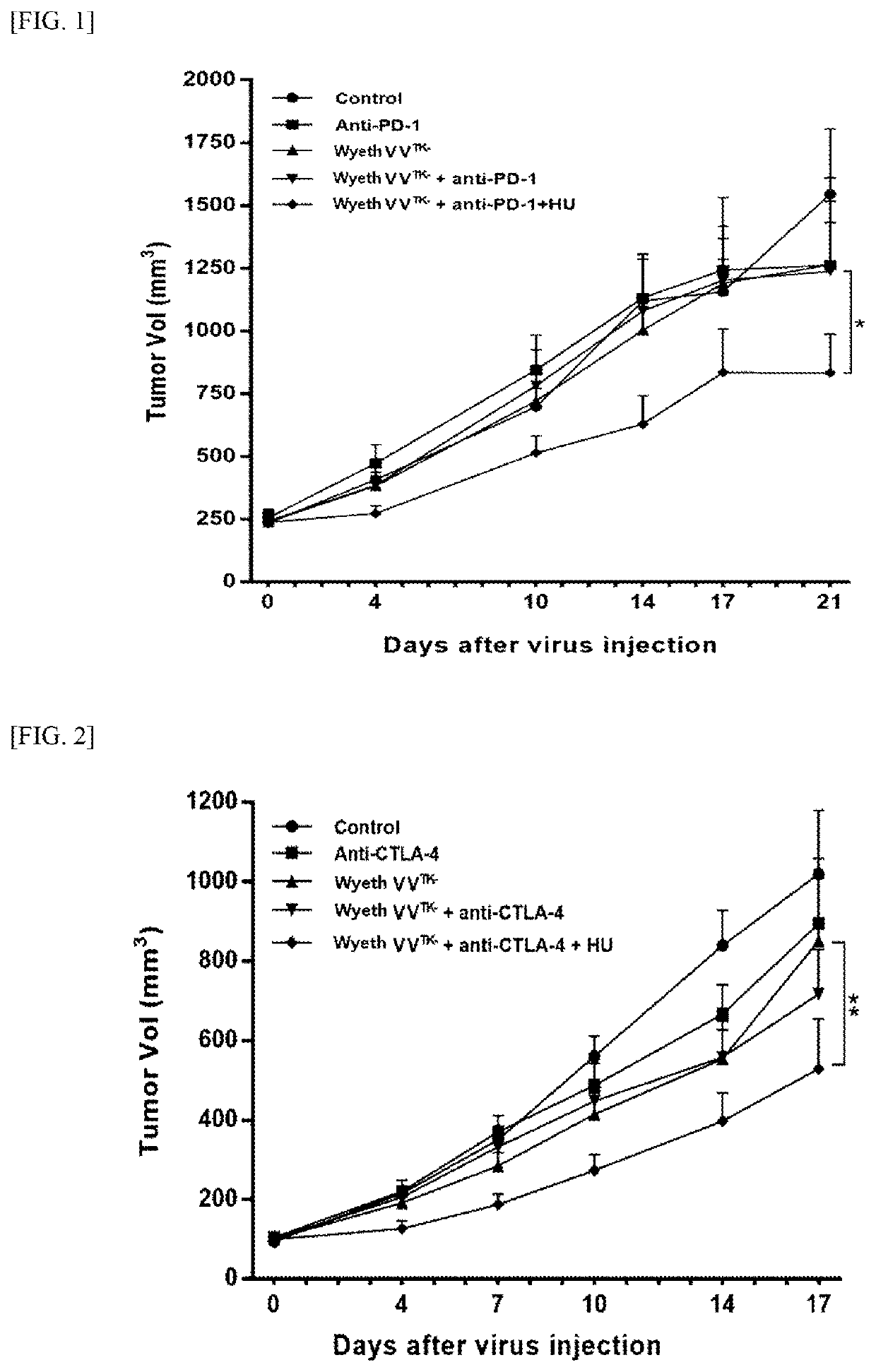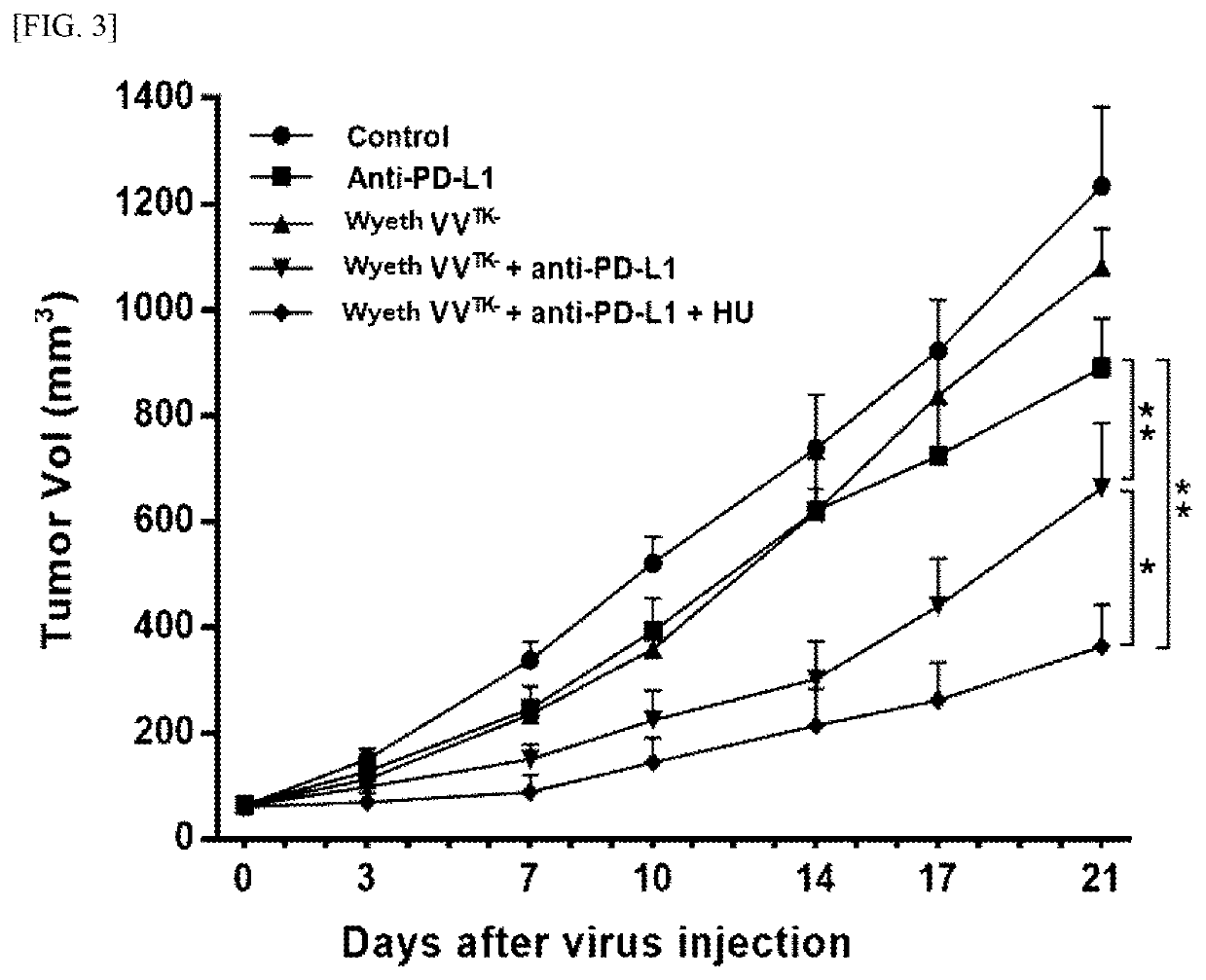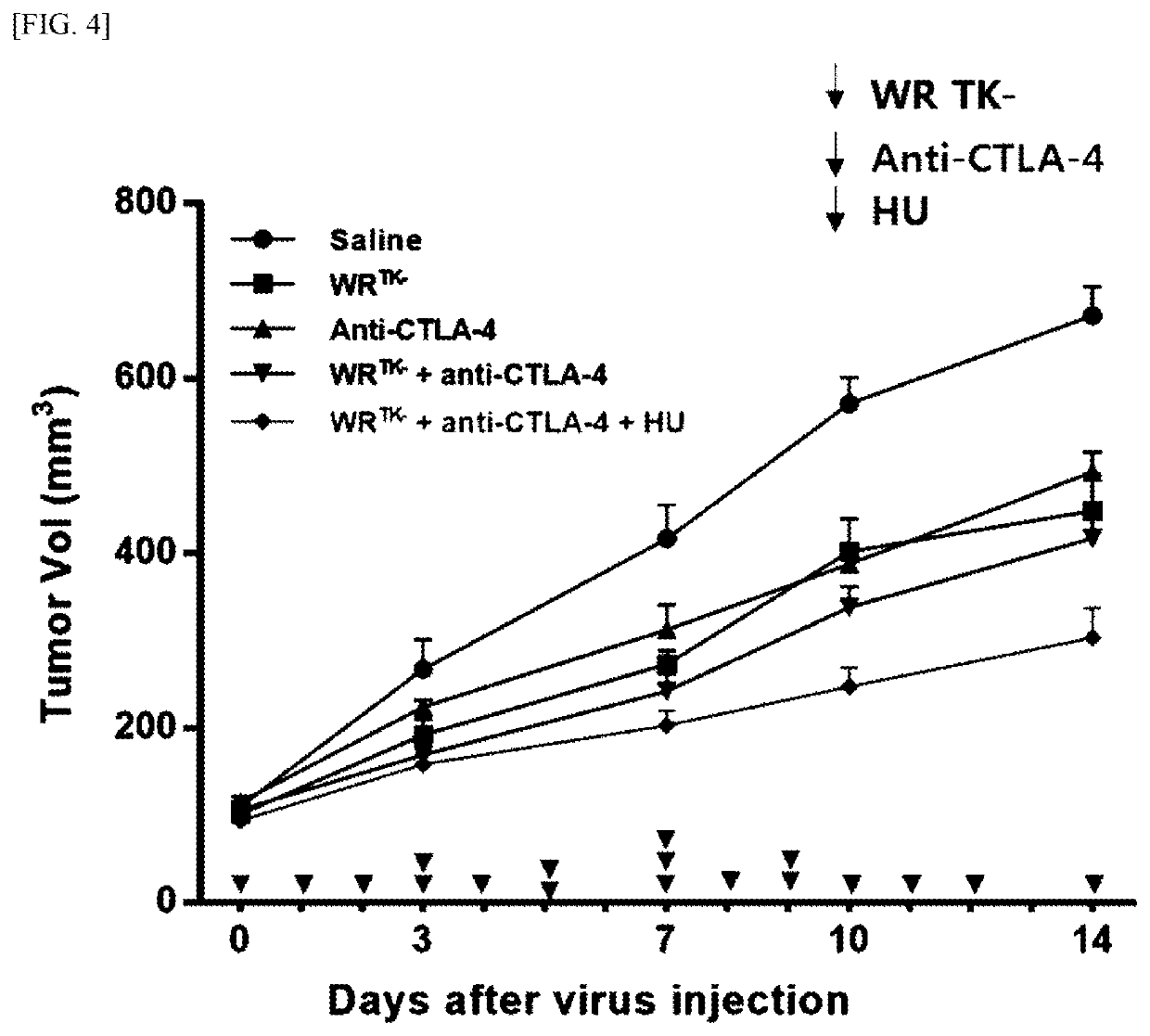Pharmaceutical composition for treating cancer comprising anticancer virus, immune checkpoint inhibitor and hydroxyurea as active ingredients
a technology of anticancer virus and active ingredients, applied in the direction of drug compositions, antibody medical ingredients, dsdna viruses, etc., can solve the problems of difficult-to-predict results, disease or early death, persistent systemic inflammatory response, main organ dysfunction, etc., and achieve excellent anticancer effect and safety
- Summary
- Abstract
- Description
- Claims
- Application Information
AI Technical Summary
Benefits of technology
Problems solved by technology
Method used
Image
Examples
preparation example 2
ic Virus (WOTS-418)
[0102]To produce an oncolytic virus in which thymidine kinase (TK) gene is deleted and which expresses a mutated herpes simplex virus thymidine kinase (HSV1-TK) gene, a TK region in the Western Reserve strain wild-type vaccinia virus was subjected to substitution using (as a shuttle vector) pUC57amp+ plasmid (Genewiz, USA) into which synthesized mutated type 1 HSV-TK gene (pSE / L promoter) of SEQ ID NO: 1 and firefly luciferase reporter (p7.5 promoter) gene were recombined. An oncolytic virus was obtained in the same manner as in Preparation Example 1.2 using the shuttle vector as constructed above, and this oncolytic virus was designated WOTS-418.
Experimental Example 1. Identification of Anticancer Effect of Oncolytic Virus (Wyeth PD-1 Inhibitor, and Hydroxyurea in Mouse Renal Cancer Cell-Transplanted Mice: Renca (I)
[0103]To identify an additional effect caused by administration of hydroxyurea upon co-administration of an oncolytic virus and a PD-1 inhibitor (CD27...
experimental example 5
cancer Effect of Oncolytic Virus (WOTS-418), PD-Li Inhibitor, and Hydroxyurea in Mouse Breast Cancer Cell-Transplanted Mice: 4T1 (II)
Experimental Example 5.1. Production of Mouse Breast Cancer Cell-Transplanted Mice and Drug Administration
[0122]To identify an additional effect caused by administration of hydroxyurea upon co-administration of an oncolytic virus and a PD-L1 inhibitor (CD152, BioXCell), an experiment was conducted using mouse breast cancer cell-transplanted mice.
[0123]First, Balb / c mice (female, 8-week-old) purchased from ORIENT BIO (Busan, Korea) were subjected to a one-week acclimatization period, and then allografted with 4T1 cancer cell line (Korea Cell Line Bank) at 1×106 cells. The tumor volume was observed until it reached 50 mm3 to 100 mm3, and then Western Reserve strain vaccinia virus-derived oncolytic virus (WOTS-418) administration was started. The Western Reserve strain has stronger proliferative capacity in an allograft model than the Wyeth strain.
[0124]T...
PUM
 Login to View More
Login to View More Abstract
Description
Claims
Application Information
 Login to View More
Login to View More - R&D
- Intellectual Property
- Life Sciences
- Materials
- Tech Scout
- Unparalleled Data Quality
- Higher Quality Content
- 60% Fewer Hallucinations
Browse by: Latest US Patents, China's latest patents, Technical Efficacy Thesaurus, Application Domain, Technology Topic, Popular Technical Reports.
© 2025 PatSnap. All rights reserved.Legal|Privacy policy|Modern Slavery Act Transparency Statement|Sitemap|About US| Contact US: help@patsnap.com



